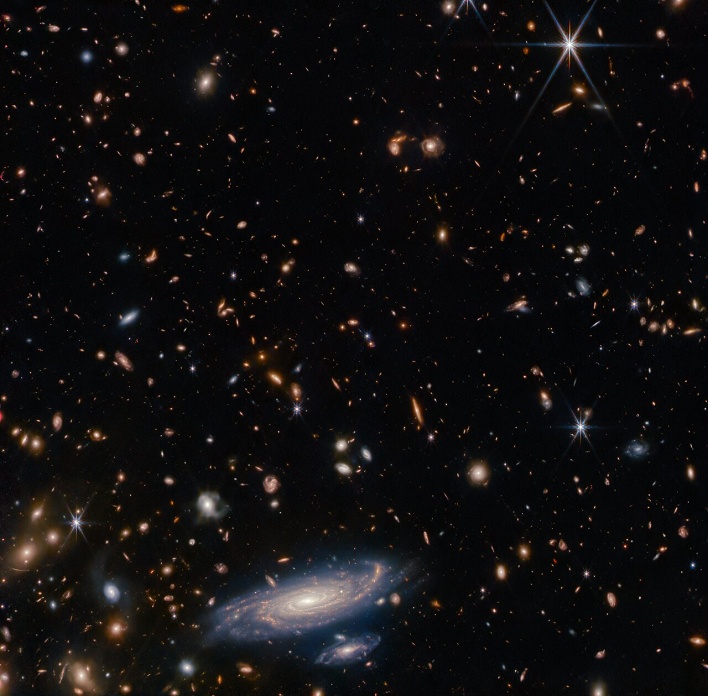NASA's JWST Captures The Pure Artform Of A Stunning Spiral Galaxy In Crisp Detail
JWST has been capturing deep space in awe-inspiring fashion since its launch in 2021. Scientists and astronomers have been using the images sent back from the observatory to further the study of the origins of our universe. One of the latest images acquired by the Webb telescope was taken during instrument calibration to help the spacecraft's ability to "dig up galactic fossils."
According to NASA, ancient galaxies are so far away that as space expands, the light from them has stretched into infrared wavelengths. This places them directly in the strength of Webb's wheelhouse to be photographed.

The image was captured using Webb's Near-Infrared Camera (NIRCam). NIRCam is the observatory's primary imager that covers the infrared wavelength range of 0.6 to 5 microns. It is able to reveal light from the earliest stars and galaxies that are in their earliest stages of forming. It is equipped with coronagraphs, which work by blocking a brighter object's light. This makes revealing dimmer objects nearby possible.
The image of LEDA 2046648 unveils a wider view of the field of stars surrounding the spiral galaxy. NIRCam demonstrated its brilliant resolution in infrared wavelengths by picking out an abundance of smaller, more distant galaxies and luminous stars around this galaxy.
Utilizing images such as this will help scientists compare galactic "dinosaurs" with modern galaxies and understand more about how galaxies evolve. NASA says that this makes Webb "the ultimate paleontologist."

